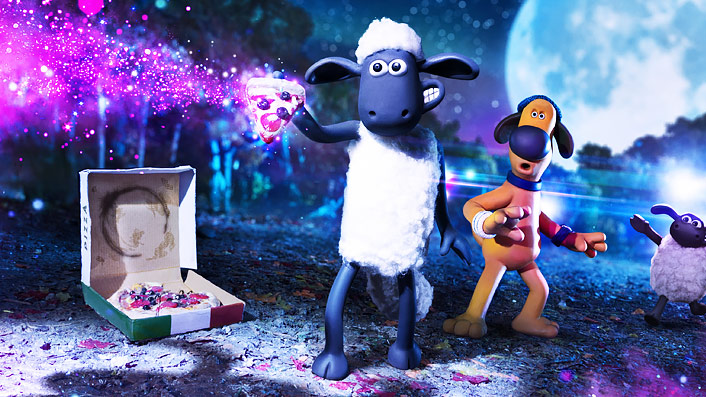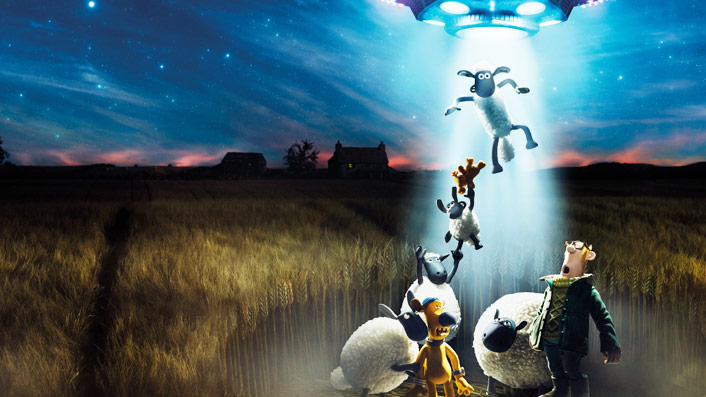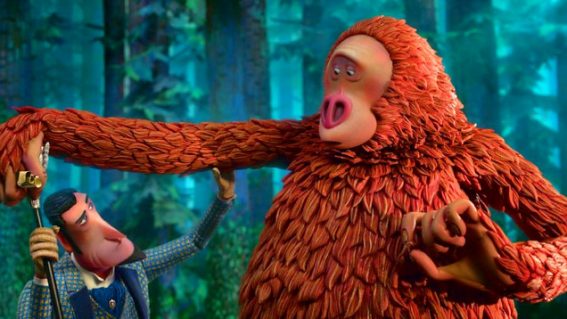The brilliant Shaun the Sheep: Farmageddon is a rare breed of filmmaking

The geniuses at Aardman Animations have done it again, writes critic Luke Buckmaster, crafting a brilliant film out of Shaun the Sheep’s second big screen adventure.
The period of cinema history prior to the invention of sound is widely called “silent,” though that word tends to overlook two important things. One: that music back then was actually, in a sense, more striking than music in films today, given scores were performed live in cinemas. And two: silent features were full of talking, spoken words communicated via intertitles. Completely dialogue-free films were rare; one famous example being F. W. Murnau’s The Last Laugh – an expressionistic 1924 drama about a humiliated hotel doorman.
Observing that dialogue-free cinematic experiences are even rarer these days, in this era of MCU and Michael Bay and various other forms of brain-numbing bombast, might be stating the bleeding obvious – but it’s certainly relevant to a discussion of Shaun the Sheep Movie: Farmageddon and its 2015 predecessor. Both these stop-motion productions (from Britain’s Aardman Animations) are examples of this uncommon kind of filmmaking, rooted in a belief that movies are and always have been a predominantly visual art form, with nothing more important than movement – both between images and inside the frame.
Farmageddon’s narrative bounces to life upon the arrival of a rambunctious powder blue alien called Lu-La, who crash-lands near the Mossy Bottom Farm. This is where Shaun and his flock live, with a balding bespectacled farmer and his loyal long-suffering sheepdog Bitzer. Lu-La is cute; a little too cute, I thought – as if a producer saw merchandise money in them thar floppy ears and squidgy, pokable frame.
She nevertheless serves several purposes, including liberating the film from scientific principles. Lu-La can mimic any noises she hears, for instance – i.e. the roar of a tractor or rumble of a train. This makes a point, as the director Jacques Tati did in great films such as Mon Uncle and Playtime, which treat their occasional dialogue as sound effects rather than verbal information, that “sound” doesn’t necessarily mean “words” – and “words” don’t necessarily mean “dialogue.”
Lu-La – that cuddly, squeezable, Bobo doll-like thing – has alien powers that make cool stuff happen, such as the ability to instantly convert corn ears into popcorn. She is also a means of configuring a new villain: the dastardly animal catcher in the previous feature becomes an MIB-esque alien chaser in this one.

The farmer’s observance of crop circles has him seeing dollar signs, envisioning an Ace in the Hole type spectacle in the form of a two-bit theme park he dubbs “Farmageddon.” When kids finally arrive to – as Hunter S. Thompson might have put it – buy the ticket and take the ride, they are disappointed to discover themselves unwittingly enrolled in a PT Barnum school of suckers born every you-know-what. The farmer’s shameless cash grab comments on laissez-faire economic liberalism; the potential end of the world just another opportunity to spin a buck.
Directors Will Becher and Richard Phelan pack in visual quirks to forge all sorts of connections. A piece of toast framed in close-up becomes a stand-in for Kubrick’s monolith during a 2001 reference – a very Aardmanian flourish. Like Buster Keaton and Charlie Chaplin comedies, the humour transcends place and time, and (appearance of animals notwithstanding) trades in the currency of human experience. A character stepping into a bucket of glue is funny; a character falling face-first into a puddle of mud is funny. The timing feels effortless, despite the stop-motion process making the construction of this film painstaking.
Becher and Phelan go beyond pop culture hat-tipping (i.e. the 2001 reference) and universal slapstick (i.e. silent era comedians) into more ambitious territory; even into visual encapsulations of verbal expression. In one scene, for instance, Lu-La and Shaun accidentally teleport a furious bull into the cockpit of the UFO they are flying. The bull huffs and puffs, ready to spring to action like a jack in a box. Flying over the town, they drop this angry ungulate into – wait for it – a china shop. This both writes into the audience’s mind the common expression (“like a bull in a china shop”) and illustrates its meaning – which, according to the first response served up by Google, refers to “behaving recklessly and clumsily in a situation where one is likely to cause damage.”
That’s pretty freakin’ neat, but the directors don’t linger: their intensely visual approach moves quickly, valuing narrative economy. At one point we are privy to a snappy flashback illustrating the villain’s backstory. This Mulder/Scully amalgam was mocked in school as a child when she presented to her class a picture of aliens she spotted, so she dedicated her life to finding them in an attempt to reconcile this moment. In another film this backstory could have consumed several scenes, or even an entire act.
Farmageddon isn’t as sharply wired to the performative absurdities of humans as its (superior) predecessor. Nor does it have the thematic focus of, say, Modern Times, Charlie Chaplin’s 1936 comedy also about machines that one could deem to be alien: the massive apparatus’ of “modern” factories, used by the artist used to satirize mass production. But how wonderful that these are the kinds of films one feels inclined to compare Farmageddon to. I can’t say I’m surprised. But, like I was the last time Shaun bounced around the paddock, I’m certainly enchanted.


















